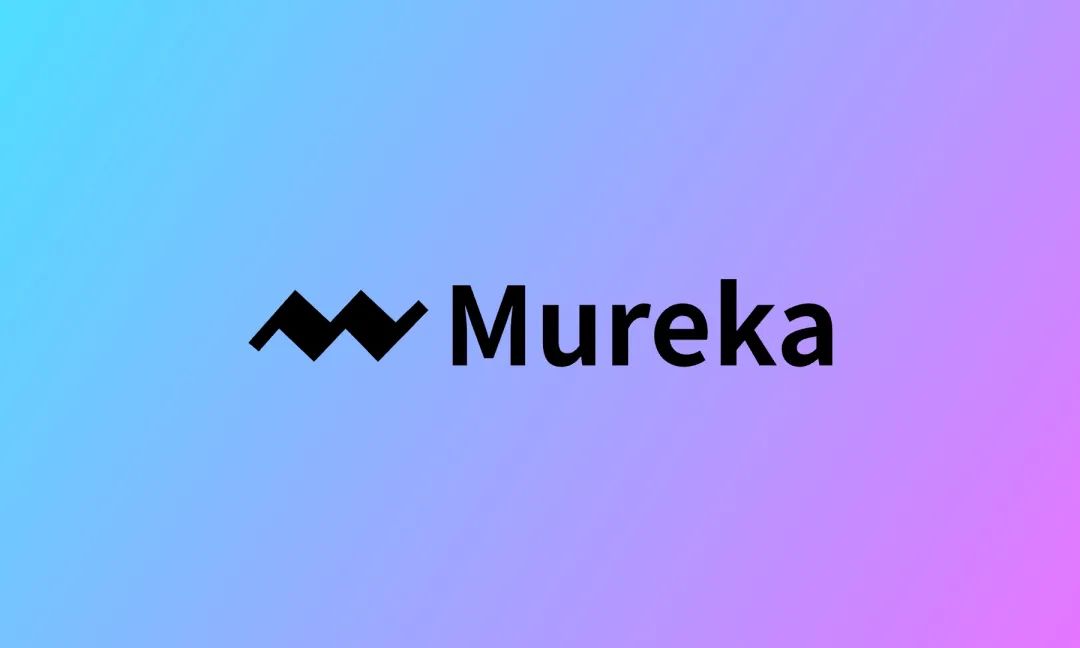这种数字货币的前景超过比特币|《财富》独家

|
瑞波公司首席执行官布拉德·加林豪斯感觉很不错。他刚在多伦多一场嘈杂的论坛上介绍了堪比本·伯南克的大牛,还有加密届天才维塔利克·布特林,与此同时,他执掌的瑞波公司发展迅速。 截至本月,瑞波已向超过100家银行发放许可证应用其区块链技术,而据Coinmarketcap统计,数字货币瑞波币(XRP)市值接近80亿美元,成为仅次于比特币和以太坊的第三大数字货币。 《财富》采访了加林豪斯,主要想了解其下一步动向,例如瑞波打算如何处置巨量瑞波币,加林豪斯称之为“战略武器”。 以下是采访实录,重点包括:存量瑞波币与瑞波公司战略密切相关;瑞波已经盈利(不过目前利润部分来源是出售瑞波币);加林豪斯认为主要数字货币会和平相处。 采访中也提到了银行如何使用瑞波币的情况,加林豪斯还表示担心各国央行出台自己的数字货币取代现有币种。(剧透一下:他不是特别担心。) 以下就是谈话内容,为简洁明确已经过编辑: The Ledger:瑞波公司和瑞波币跟其他区块链应用有何区别? 布拉德·加林豪斯:目前来看,瑞波没成为主流区块链公司的原因是我们不是比特币。之前我们的观点比较克制,没想着对抗银行,也不想对抗政府,我们的货币没什么反抗性。所以有段时间里,我们与更倾向自由主义的加密货币竞争有些困难。 2017年,人们终于意识到不能让一种加密货币统治市场。所以现在瑞波币负责提供支付问题的垂直解决方案,以太坊专门做智能领域,比特币越来越变成价值存储工具。三种货币没有相互竞争。事实上,我很希望比特币和以太坊成功。 为什么银行需要瑞波币? 是出于流动性方面的考虑。如果银行有瑞波币之类工具,是具备实际价值的。现在银行管理数十万亿流动性需求都是通过同业账户。我们认为这种方式效率很低。其实可以使用数字资产提供流动性,瑞波提供的服务就很合适。比特币得四个小时才能完成一笔交易,瑞波币只要3.6秒。 请解释下瑞波公司如何向银行提供瑞波币。 瑞波网加速器项目就是为了分配价值3亿美元的瑞波币,目标是推进应用。有点类似早期的维萨卡。大致意思就是“银行老爷们,鼓励你们多用用瑞波币。我们会支付瑞波币。”如果他们不想要瑞波币,也可以给美元。 目前我们没提供过瑞波币,也不完全准确。一年半前我们测试过。当时给过十多家银行少量瑞波币,主要为了证明瑞波币可多边使用。我们希望未来能解决银行的流动性问题。 但我不会直接给银行瑞波币。这事得水到渠成,先有X和Y,Z自然会发生。 瑞波公司的定价模型怎么制定? 部分是软件许可,部分是专业服务,还有一部分是交易费用。 价格取决于银行的规模,还有打算使用瑞波进行的转账交易数量。这些都是重要的承诺。我们说的可不是向Salesforce卖10个席位的许可,一年几千美元的生意。起码后面得加个0。 央行可能推出自己的数字货币,有没有让你夜不能寐? 没有。我们跟全球十多家央行讨论过,运气还不错。我觉得我这辈子看不到央行放弃法定货币。 法定货币到底什么意思?看看这张纸(举起一张20美元纸币),其实也就是个符号,一张20美元的纸币加上一串序号。将纸币符号化什么意思?我其实也不太懂。经常听人们谈起,但是不理解。 担任首席执行官近一年,你跟瑞波两位联合创始人关系如何? 克里斯(拉尔森)全权参与公司事务。他担任总裁,我们每天都要谈工作。克里斯对互联网价值的设想基本没变。我跟杰德(麦凯莱布)没什么接触。我见过杰德几次,也知道(他的公司)Stellar主要做什么,其他就不了解了。 瑞波公司赚钱了么?多少来自出售瑞波币? 可以说我们现金流是正的,所以对整个行业生态和公司有益的项目都可以投。我们在瑞波币市场上公开透明非常重要,所以每季度都会发布报告,说明当季在公开市场出售多少币,还有卖给机构投资者多少币。 是,如果不卖瑞波币我们现金流不会是正的。这就说回瑞波币的意义了,这些币是投资生态重要的战略武器。有了币我们才能请得起全世界最优秀的工程师,还能向平台和相关技术持续投资。 人们对瑞波有哪些误解? 我觉得最容易误解的一点就是,有人会说“哦,瑞波是个集中化的平台。”在我看来这是老掉牙的看法。瑞波的技术IRP是开源的,瑞波币的记账本也是开源的。 如果瑞波公司消失了,瑞波币就不会继续交易。我认为这正是去中心化的含义。由于瑞波币生态系统中重要参与方瑞波公司坚持投资一些好项目,币价是可能走低。但我坚持认为关于集中化和去中心化还是存在误解。虽然我絮叨了一堆不知道《财富》读者会不会关心的事,其实都是技术层面的问题。 实现互联网价值方面,瑞波公司理想很远大。对我们来说,问题在于如何促进理想实现,将各种价值资源联结起来,价值资源主要指的是银行。加密社区里还在把银行当成敌人的,终会自食苦果。 瑞波公司称,由于Coinmarketcap只计算流通市值而非总市值,其市值实际上为188亿美元。(财富中文网) 译者:Pessy 审校:夏林 |
Brad Garlinghouse is feeling good. The CEO of Ripple just brought the likes of Ben Bernanke and crypto-wunderkind Vitalik Buterin to a buzzy conference in Toronto, and his company is growing fast. As of this month, Ripple has licensed its blockchain technology to over 100 banks while its digital currency, XRP, now has a market cap of nearly $8 billion* according to Coinmarketcap—third behind the digital money giants, bitcoin and Ethereum. Fortune’s The Ledger caught up with Garlinghouse to find out where all this is going, including how Ripple plans to deploy its bulging reserves of XRP, which he describes as a “strategic weapon.” You can read our Q&A below, but the important takeaways include: the XRP hoard is integral to Ripple’s business strategy; Ripple is making money (though its profits for now depend in part on selling that XRP); Garlinghouse believes big digital currencies will have a peaceful coexistence. There’s also some stuff on how banks are using XRP, and on whether Garlinghouse worries central banks will replace digital currencies with tokens of their own. (Spoiler: he’s not too worried.) Here’s the conversation, which has been edited for brevity and clarity: The Ledger: How does Ripple and XRP compare to other blockchains? Brad Garlinghouse: For a period of time, Ripple wasn’t mainstream blockchain because because we weren’t bitcoin. We took a rather contrarian view at the time that we’re not anti-bank, we’re not anti-government, we’re not anti-fiat currency. For a while that took conviction to stay the course in the face of the more libertarian elements of crypto. In 2017, people have realized there isn’t going to be one crypto to rule them all. You’re seeing vertical solutions where XRP is focused on payment problems, Ethereum is focused on smart contacts, and increasingly bitcoin is a store of value. Those aren’t competitive. In fact, I want bitcoin and Ethereum to be successful. Why do banks need XRP? It’s about liquidity. If you have a utility like XRP that has a real value proposition. The liquidity needs of banks today is managed with literally ten trillion of float that sits in these nostro and vostro accounts. We believe very strong this is an inefficient model. You can use digital assets to fund liquidity, and Ripple is uniquely positioned to capitalize on that. Bitcoin takes four hours to settle a transaction. XRP takes 3.6 seconds. Explain how Ripple will distribute XRPs to banks. The Ripple Net Accelerator program is designed to allocate up to $300 million to create incentives to accelerate adoption. It’s not dissimilar to the early days of Visa. The rough idea is “we’ll pay you Mr. Bank or Mrs. Bank to accelerate your use of this program. We’ll pay you in XRP.” If they don’t want XRP, they have an option to use US dollars. To date we haven’t supplied any XRP. That’s not entirely true. We did an experiment 18 months ago. We gave a very small amount of XRP to a dozen banks to demonstrate the multilateral nature of XRP. It’s our vision of solving a liquidity problem for banks. I’m not going to give it to them. It’s an incentive if X, Y, and Z happens. How does Ripple’s pricing model work? It’s one part software license, one part professional services and one part transaction fees. The price depends on the size of banks and the number of transactions the bank intends to use Ripple for. These are big commitments. We’re not talking about 10 seat licenses from Salesforce that might cost a few thousand a year. You can add at least another zero. Does the prospect of Central Banks introducing their own tokens keep you up at night? No. We’ve had the good fortune to speak to dozens of central banks around the world. I don’t think central banks are going to give up fiat currency anytime in my lifetime. What does a fed token really mean? Look at this piece of paper [holds up a $20 bill]—that’s already tokenized—it’s a unique $20 bill with a serial number on it. What does that mean you’re taking that bill an tokenizing it? I don’t know exactly what means. I hear people talk about it but I don’t know. It’s been nearly a year since you became CEO. How’s your relationship with Ripple’s two co-founders? Chris [Larsen] is 100% involved in the company. He’s the chair and I talk to him everyday. Chris’s vision for an internet of value is very much still the vision. I don’t really have a relationship with Jed [McCaleb] of any consequence. I’ve met Jed a bunch of times and I’m aware of what [his company] Stellar is up to, but that’s about it. Is Ripple making money? How much of that comes from selling XRP? Suffice to say we’re cash flow positive and that give us the ability to invest in a way that’s good for the eco-sytem and our company. Absolutely, we harvest some of the XRP. It’s very important for us to be very transparent in XRP markets so every quarter we publish a report that specifies how much we sold in the open market and to institutional buyers. No, we wouldn’t be cash-flow positive without the XRP sales. It goes back to the fact XRP is a strategic weapon to invest in the ecosystem. It gives us flexibility to hire the best engineers in the world and to invest in the platform and the technology. What do people fail to understand about Ripple? The thing I think is often misunderstood about Ripple is people say “oh, Ripple is a centralized platform.” To me this is a legacy perspective. Ripple’s technology, IRP, is open source, XRP Ledger is open source. If Ripple as a company went away, XRP would continue to trade. To me that’s the definition of decentralization. The price might go down because Ripple as a central player in the XRP eco-system invests in what’s good but I think there continues to be misunderstanding of centralization and decentralization. Though now that I’ve said all that I’m not sure Fortune readers give a shit—it’s more a technical thing. Ripple has a grand vision of enabling an internet of value. For us, it’s how to catalyze that vision and connecting the repositories of value—those repositories are the banks. Those who in the crypto community who view them as the enemy are an obstacle to their success. *Ripple says its market cap is actually $18.8B since the Coinmarketcap only counts circulating, not total, supply. |










